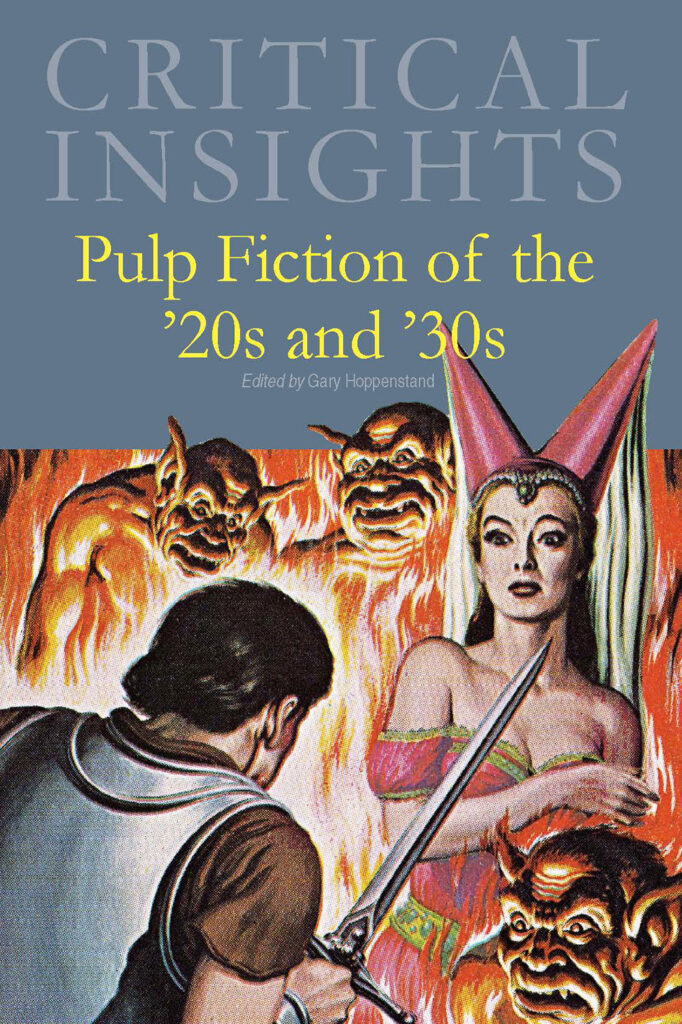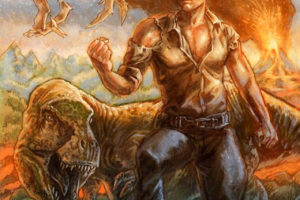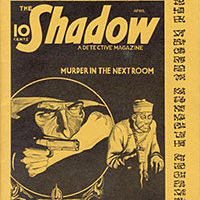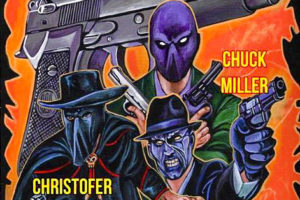I recently got pair of more academic works edited by Gary Hoppenstand that may be of interest.
 The first is a hardcover reference book, Critical Insights: Pulp Fiction of the ’20s and ’30s. Published in 2013 by Salem Press, it’s more likely to be found in library reference sections, but if you want a copy, you can order one from Salem or you might find a used copy (maybe a former library book like I did) pretty cheap.
The first is a hardcover reference book, Critical Insights: Pulp Fiction of the ’20s and ’30s. Published in 2013 by Salem Press, it’s more likely to be found in library reference sections, but if you want a copy, you can order one from Salem or you might find a used copy (maybe a former library book like I did) pretty cheap.
My main complain about the book is it doesn’t look at the entire field of pulp magazines, but only at Weird Tales and a handful of the major authors there. So understand that going into it.
We start off with a couple of intros by Hoppenstand that gives a good overview of where pulp magazines came about from the story papers of the early 1800s into the dime novels of the late 1800s and then the pulps, with a good coverage on the development of Weird Tales and its history.
The meat of the volume is 11 essays on not just the major authors of Weird Tales: Robert E. Howard, H.P. Lovecraft, and Clark Ashton Smith, but also Robert Block, C.L. Moore, Henry Kuttner, August Derleth, Frank Belknap Long, and Seabury Quinn.
Then there is a section of “archived materials,” which reprints essays from prior volumes from Salem Press. So we get essays on the Conan series, The Dunwich Horror, CAS’s Hyperborea and Zothique, C.L. Moore’s Jirel of Jorey, and the Jules de Grandin series.
Thankfully, I do enjoy Weird Tales and works about it and can enjoy this volume. But I’d really like to see such as work as this focused on the entire pulp field as we have some great books on Weird Tales already, some of which I’ve reviewed here. We need kind of an academic version of Blood ‘n’ Thunder Guide to Pulp Fiction.
The other volume is Popular Fiction: An Anthology, published by Pearson Longman. Popular fiction, as separate from “literature,” was the fiction aimed at a popular audience, of which the fiction in pulp magazines is included. So this volume is aimed at college English courses with 45 short stories from a variety of authors, including some pulp authors. These are in five groups: horror, romance, science fiction, detective, and adventure. Each section has an intro, and then each author gets a brief intro.
Then the volume has 10 essays on the craft and nature of popular fiction writing from the authors themselves. A further seven essays are critical perspectives on this field from academic types. And there is a filmography in each area.
Now, several pulp authors are included: Lovecraft, Moore, Isaac Asimov, Robert A Heinlein, Ray Bradbury, Dashiell Hammett, Raymond Chandler, Edgar Rice Burroughs, Max Brand, Zane Gray, and Rafael Sabatini, as well as close authors like Arthur Conan Doyle, H. Rider Haggard, Jack London, Edgar Allan Poe, and others.
Going over this volume, I wish there was a similiar volume on just pulp fiction. To be precise, the pulp fiction that appears in pulp magazines, so nothing from paperback books, men’s adventure magazines, etc., for those still unclear what pulp fiction is. I would go with more than five groups, kind of going with BnT Guide‘s groups: horror, romance, science fiction, detective/crime, adventure, war, aviation, sports, shudder/weird menace (separate from horror), spicy, western, and hero pulps. Then have essays from pulp authors and editors on pulp fiction writing. Some critical essays from academic types, and a filmography of films based on pulp works. I know I’d be interested in getting such a volume. It might be a great intro to folks getting into pulp fiction.
We have Derrick Ferguson‘s excellent listing of New Pulp works. If we can’t get a book, why not a similar listing of original pulp, but more focused on shorter works, though maybe focused on works that are fairly easy to obtain (either in electronic or reprint form)?
But do check these two works out.




Your comments